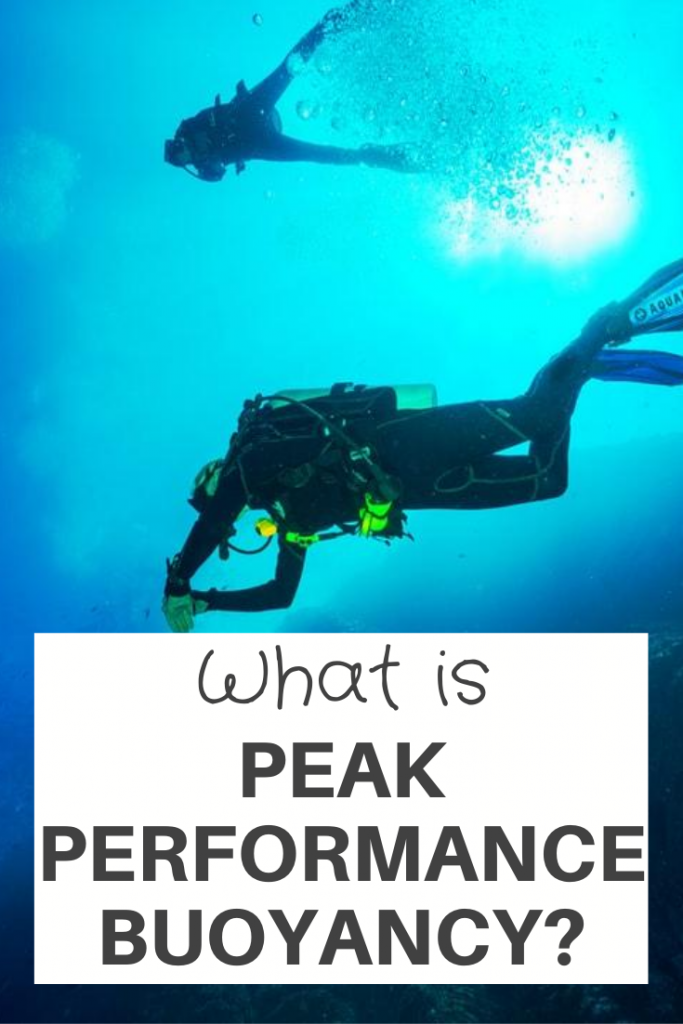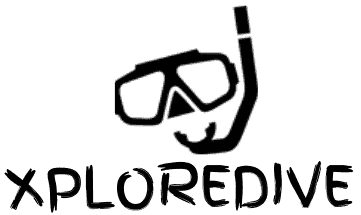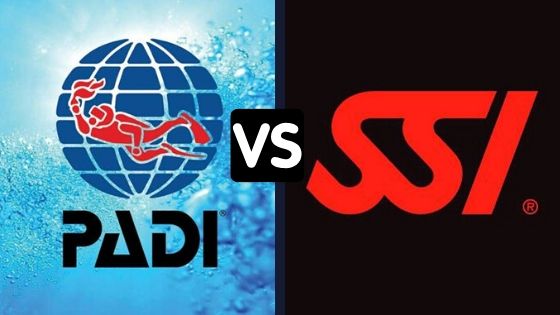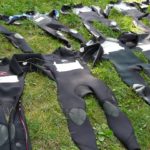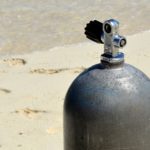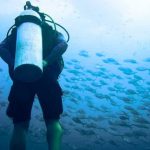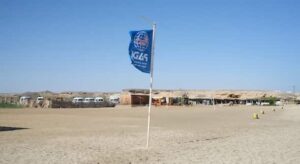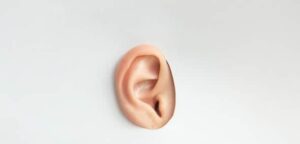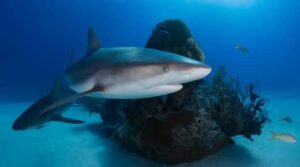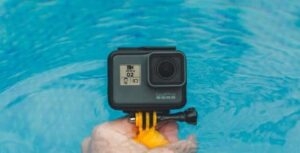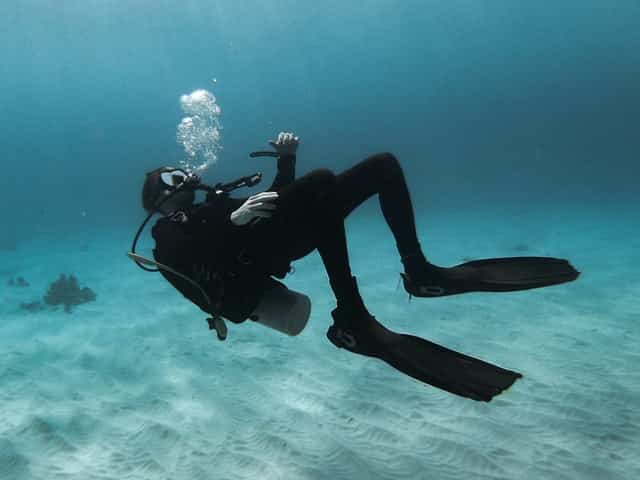
Buoyancy is a big part of scuba diving. And is an important skill to get right. The reason it is important is that buoyancy is what enables you to glide effortlessly through the water at any depth, without needing to use your hands and therefore using less air and energy.
Due to the importance of buoyancy in scuba diving, PADI created a specialty course called peak performance buoyancy. The course tries to improve the buoyancy skills of scuba divers so they glide effortlessly, use less air and ascend, descend or hover almost as if by thought.
In today’s post, we will go through in more detail about buoyancy in scuba diving, so let’s get started!
Read more on common questions asked by divers
What Is Buoyancy In Scuba Diving?
Buoyancy is one of the most important skills to learn to become a good scuba diver. Buoyancy is what determines whether the diver will float, ascend, or descend. The divers must control their rate of descent and ascent in the water and be able to maintain a constant depth.
By learning and fine-tuning the skill of buoyancy will improve your diving efficiency and make your diving fun and effortless.
What Is Peak Performance Buoyancy?
The Peak Performance Buoyancy Specialty is a course provided by PADI, you read more details on it from the PADI website.
The aim of the course is to improve the buoyancy skills of scuba divers so they glide effortlessly, use less air and ascend, descend or hover almost as if by thought.
What Are The Types Of Buoyancy?
There are three types of buoyancy which are as follows.
- Positive Buoyancy.
- Negative Buoyancy.
- Neutral Buoyancy.
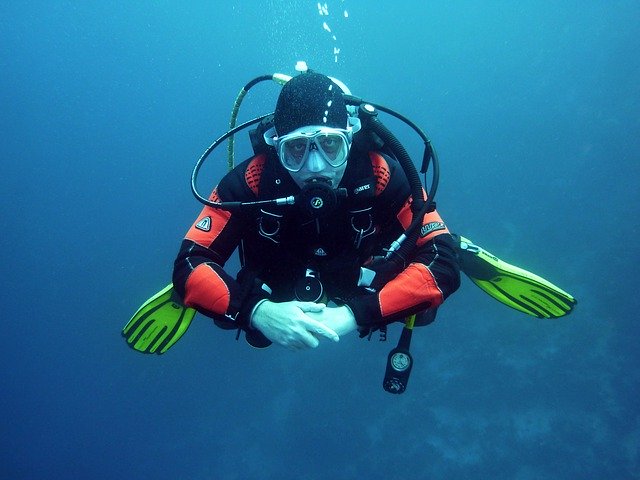
Positive Buoyancy
A positive buoyancy happens when the diver or object is lighter than the fluid it displaces. In this case, the diver will ascend because their weight is lighter than the buoyant force.
Negative Buoyancy
A negative buoyancy happens when the diver or object is denser than the fluid it displaces. In this case, the diver will descend because their weight is greater than the buoyant force.
Neutral Buoyancy
A negative buoyancy happens when the diver or object’s weight is equal to the fluid it displaces. This is what scuba divers aim for in as to glide effortlessly through the water.
Achieve neutral buoyancy involves getting your weight belts right, using your air sparingly, consciously watching your breathing, and relax.
Using Your BCD To Improve Your Buoyancy
You should add air sparingly to your BCD. If you feel that you are negatively buoyant at the bottom. Then you can add a small quick burst of air to your BCD.
Remember that you don’t improve your buoyancy by inflating your BCD, you are controlling the buoyancy with it, sometimes you need to deflate your buoyancy to improve it.
When you inflate your BCD, it will expand thus displacing the water and thus making the diver more buoyant. Your buoyancy is a function of how much you and your gear weigh compared to the weight of the water that you and your gear displace.
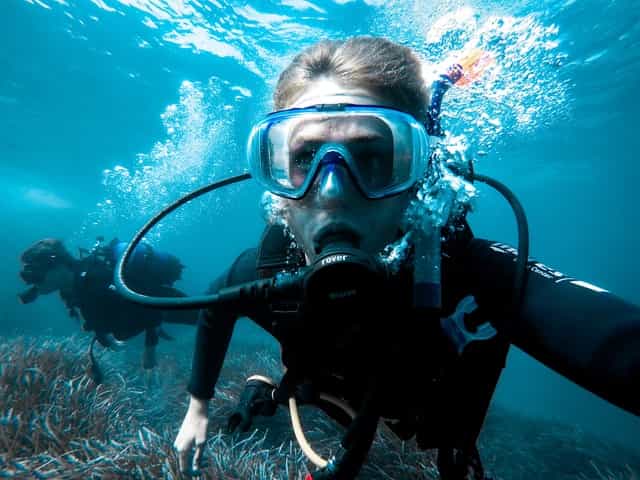
Tips To Control One’s Buoyancy Under Water
To improve a divers buoyancy simply as you get more experience scuba diving you will naturally start getting the buoyancy right.
There are tips that can help improve a divers buoyancy, these are as follows.
- You need to relax. For people new to scuba diving this is not necessarily easy. You need to consciously get your breathing right. When breathing in from the tank, you need to breathe as you normally would and very slowly exhale. This takes gaining experience and confidence to get your breathing right.
- You need to try and learn to be neutrally buoyant. And to do this with minimum gear. You can try to learn in warm waters as you need only a 3 mm dive suit, a couple of kilos in your belt, and a scuba tank.
- Figure out the right weight in your belt. Simply, if you are too heavy, you will need to add an extra amount of air to your BCD jacket to be able to ascend. Otherwise, you will have to drop the weights to ascend. If you are too light you may struggle to submerge. It is very difficult for the main neutral buoyant when to heavy or too light.

- Try to breathe with your stomach, not your chest. Not only will you be more relaxed but you will also cause less water displacement.
- The best thing about getting your buoyancy right is that you use less air, therefore your dive will last longer and your popularity amongst your diving buddies will increase dramatically since they don’t have to cut short their dive.
- Try to keep your legs horizontal not vertical unless you are in a strong current.
To summarize, the above points, mainly you need to get your weight belt right, relax, and getting your breathing right. If you don’t your buoyancy is going to be all over the place and your air consumption will be too high.
Wrapping Up
Finally, buoyancy is one of the most important skills to be a good scuba diver. It takes gaining experience to get your buoyancy right. Remember you need to get your weight belt right, relax, and watch your breathing. And of course, enjoy the dive.
And that’s it for now! I’d love to know if this guide on what is peak performance buoyancy has helped you. Let me know if you have any questions and let me know if there is more to add.
Did you enjoy this post? Then don’t forget to pin it!
